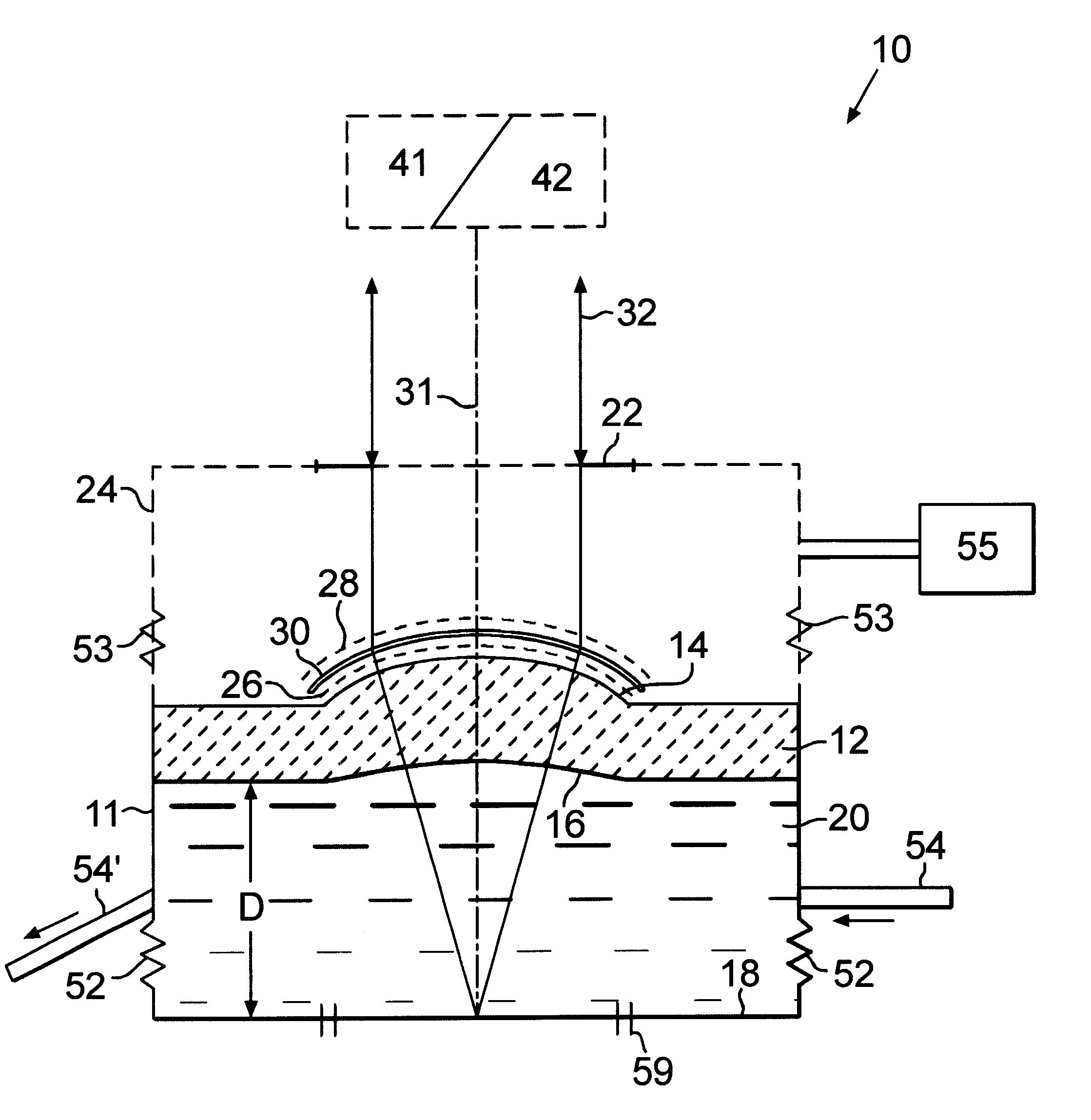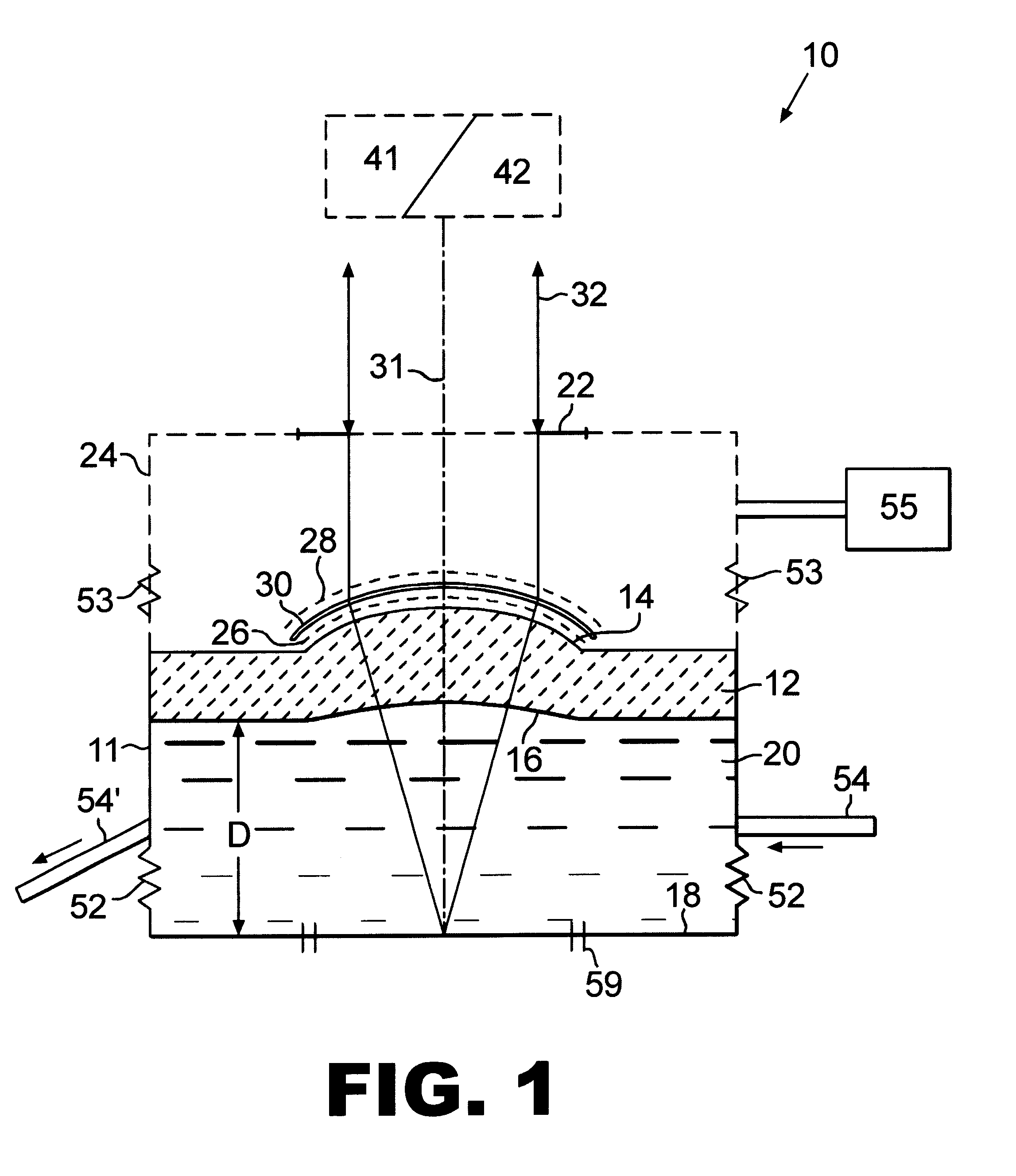Lens-eye model and method for predicting in-vivo lens performance
a lens performance and lens model technology, applied in the field of lens performance prediction and lens performance prediction in vivo, can solve problems such as difficult prediction of soft contact lens performance in vivo, for exampl
- Summary
- Abstract
- Description
- Claims
- Application Information
AI Technical Summary
Benefits of technology
Problems solved by technology
Method used
Image
Examples
Embodiment Construction
A schematic drawing of a model eye system 10 according to an embodiment of the invention is shown in FIG. 1. The model eye system 10 has a structural housing 11 and includes a representative cornea 12 having an anterior surface 14 and a posterior surface 16. A retinal surface 18 is located posterior to the posterior corneal surface 16 at a distance, D. A dispersion medium 20 is located between the posterior corneal surface 16 and the retinal surface 18. An optional enclosure 24 (shown in dotted lines) having a variable aperture 22 for light entry and exit, surrounds the anterior corneal surface 14 to provide a controlled environment as necessary or desired for the measurement being conducted. As illustrated, a soft contact lens 30 is located on the anterior corneal surface 14.
The housing 11, in the region of the dispersion medium 20, is shown having flexible joints 52 that allow the separation distance D between the cornea 12 and the retinal surface 18 to be adjusted for focus error...
PUM
| Property | Measurement | Unit |
|---|---|---|
| humidity | aaaaa | aaaaa |
| humidity | aaaaa | aaaaa |
| flexible | aaaaa | aaaaa |
Abstract
Description
Claims
Application Information
 Login to View More
Login to View More - R&D
- Intellectual Property
- Life Sciences
- Materials
- Tech Scout
- Unparalleled Data Quality
- Higher Quality Content
- 60% Fewer Hallucinations
Browse by: Latest US Patents, China's latest patents, Technical Efficacy Thesaurus, Application Domain, Technology Topic, Popular Technical Reports.
© 2025 PatSnap. All rights reserved.Legal|Privacy policy|Modern Slavery Act Transparency Statement|Sitemap|About US| Contact US: help@patsnap.com



